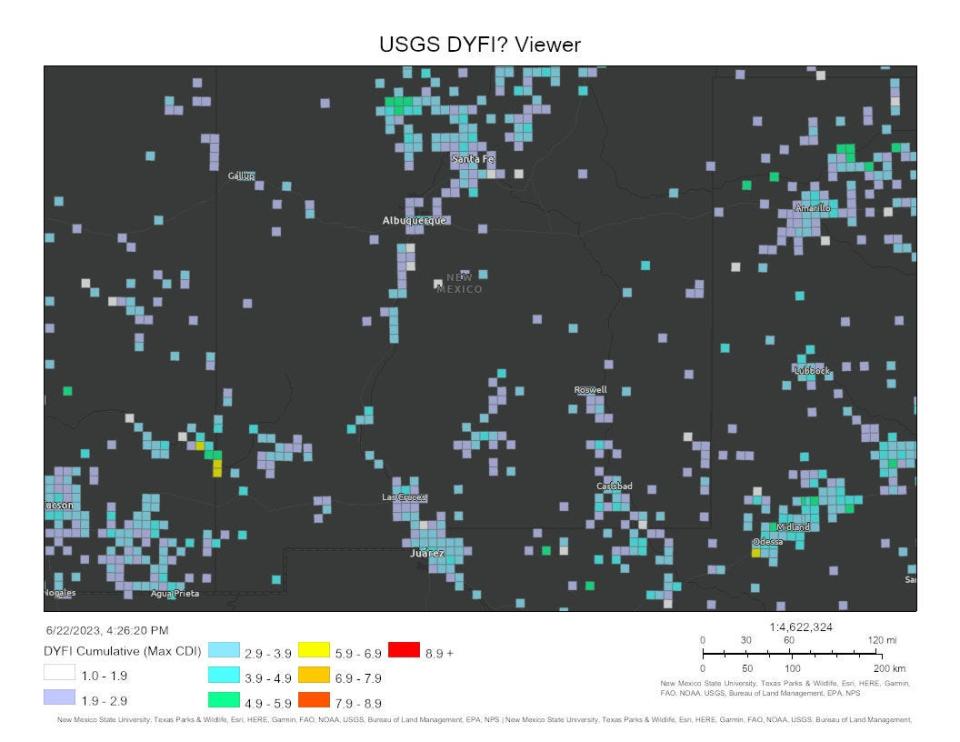Did you feel that? New Mexicans can report feeling an earthquake to help track data.
CARLSBAD ― The USGS has tracked earthquake data for decades, and part of the agency's data collection includes reports from people who have felt everything from a little jolt to a giant shake.
Through a series of questions, people are asked to document their experience — the date and time, where they were when the shaking was felt and even what emotions they had while experiencing the quake.
The reporting system, according to the USGS FAQ webpage, was "developed to tap the abundant information available about earthquakes from the people who experience them."
In essence, everyday Americans become scientists.

Why the need to report earthquakes in New Mexico?
But beyond contributing to a growing body of knowledge, why is it important to track the data?
The Carlsbad Current-Argus and its reporting partner KRWG Public Media are tackling that question with a new reporting project: Shaky Ground.
Note to readers: We’ve made this story free as an important public service. If you are able, help power local journalism. Subscribe to the Carlsbad Current-Argus.
Today I’m driving around the oilfield with @JonnyCoker from @krwg working on a story about earthquakes in the #permianbasin and their connection to the oil and gas industry. Story coming soon @CCurrentArgus pic.twitter.com/JwU2X3rQSM
— Adrian Hedden (@AdrianHedden) June 1, 2023
Current-Argus Senior Reporter Adrian Hedden and KRWG Investigative Reporter Jonny Coker dove into data that shows as the Permian Basin is continually tapped for its natural resources ― crude oil and natural gas ― it is also becoming increasingly vulnerable to induced seismicity.
"By contributing your experience of the earthquake, either immediately afterward, or whenever it is possible for you to do so, you make a contribution to the scientific body of information about each earthquake," the webpage states.
Induced seismicity rocked Oklahoma in 2015, where state officials, scientist and industry leaders acknowledged that pumping waste water into disposal wells was leading to an increased number of large quakes that damaged buildings and destroyed property. As a result the state enacted a series of regulations whose efficacy is monitored even today through a statewide series of seismic monitoring stations.
In 2021 Texas also put in place measures to reduce injection into wells operating near centers of seismic activity, with New Mexico following that November.
Share your experience: Email us at news@currentargus.com to share your experience with earthquakes in New Mexico and West Texas with the subject line Shaky Ground.
What's the Shaky Ground project?
Reporting on Shaky Ground began in April.
Reporters visited Pecos, Texas just across the New Mexico/Texas border where the USGS reported most of the recent earthquake activity in the Permian Basin was centered to learn how residents there felt about the impact of a bustling extractive industry.
Conversations with seismologists in Oklahoma, Texas and New Mexico followed with reports tackling big questions about whether legislation and regulation were the solution.
Finally, data from the U.S. Geological Survey, which tracks the epicenter, depth, strength and impact of earthquakes was used to help define the scope of the issue in the Permian Basin.
Read Shaky Ground online July 10 or find it in your Sunday, July 16 print edition. Listen on radio and view it online with KRWG Public Media at www.krwg.org on Monday, July 10.

Jessica Onsurez can be reached at jonsurez@currentargus.com. Follow her on Twitter at @jussGREAT.
This article originally appeared on Carlsbad Current-Argus: Did you feel that? New Mexicans can help track earthquake data.

